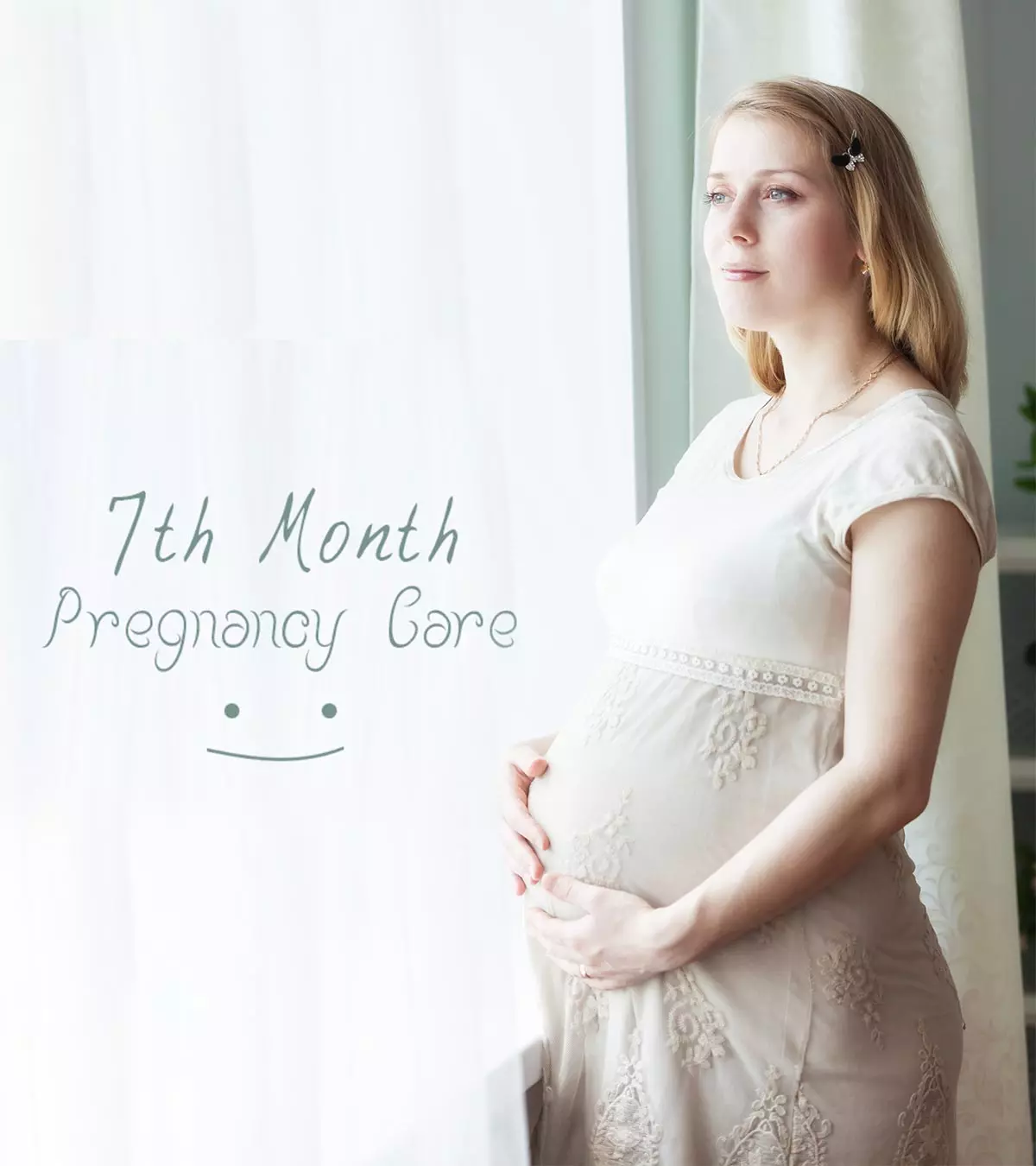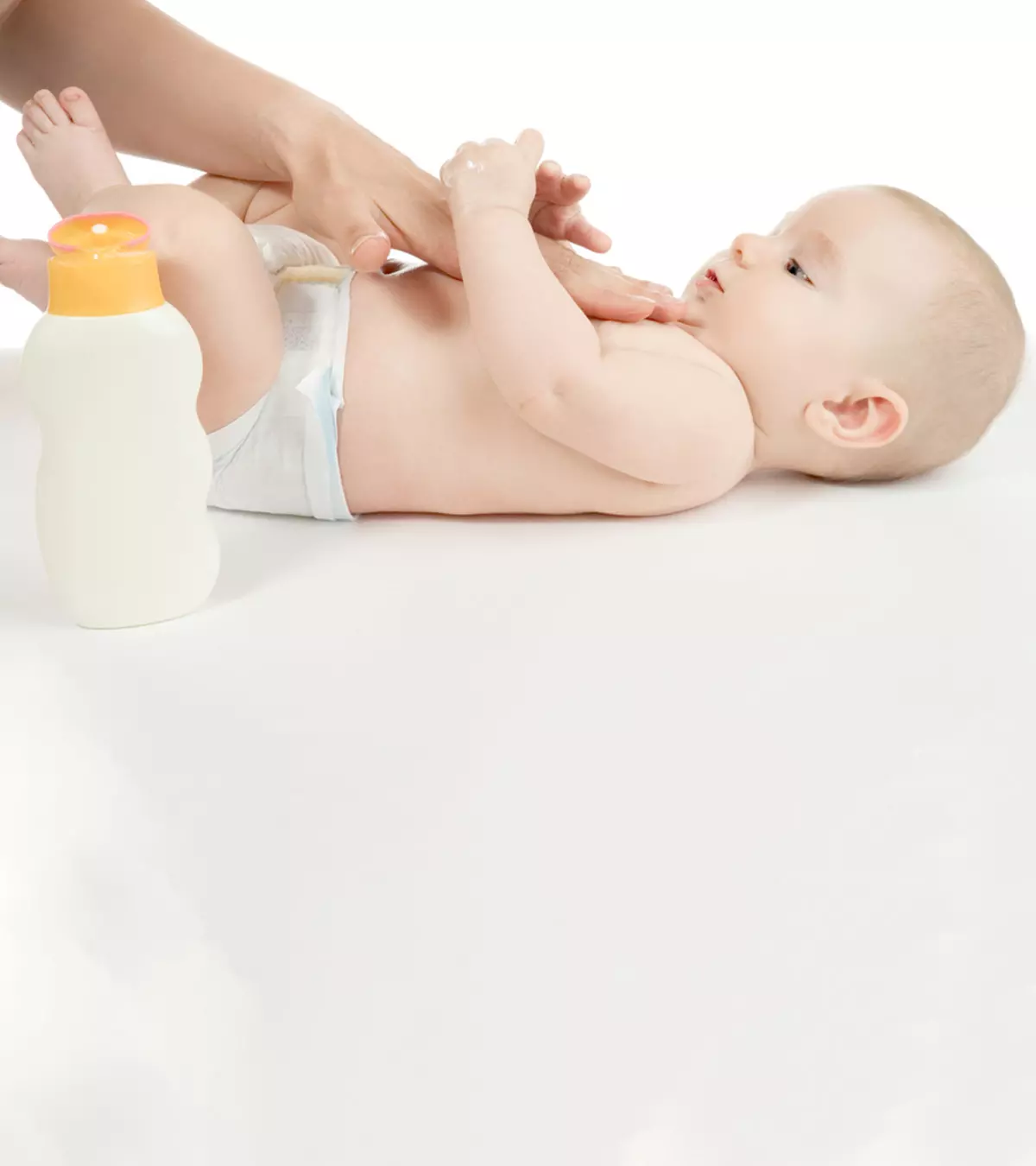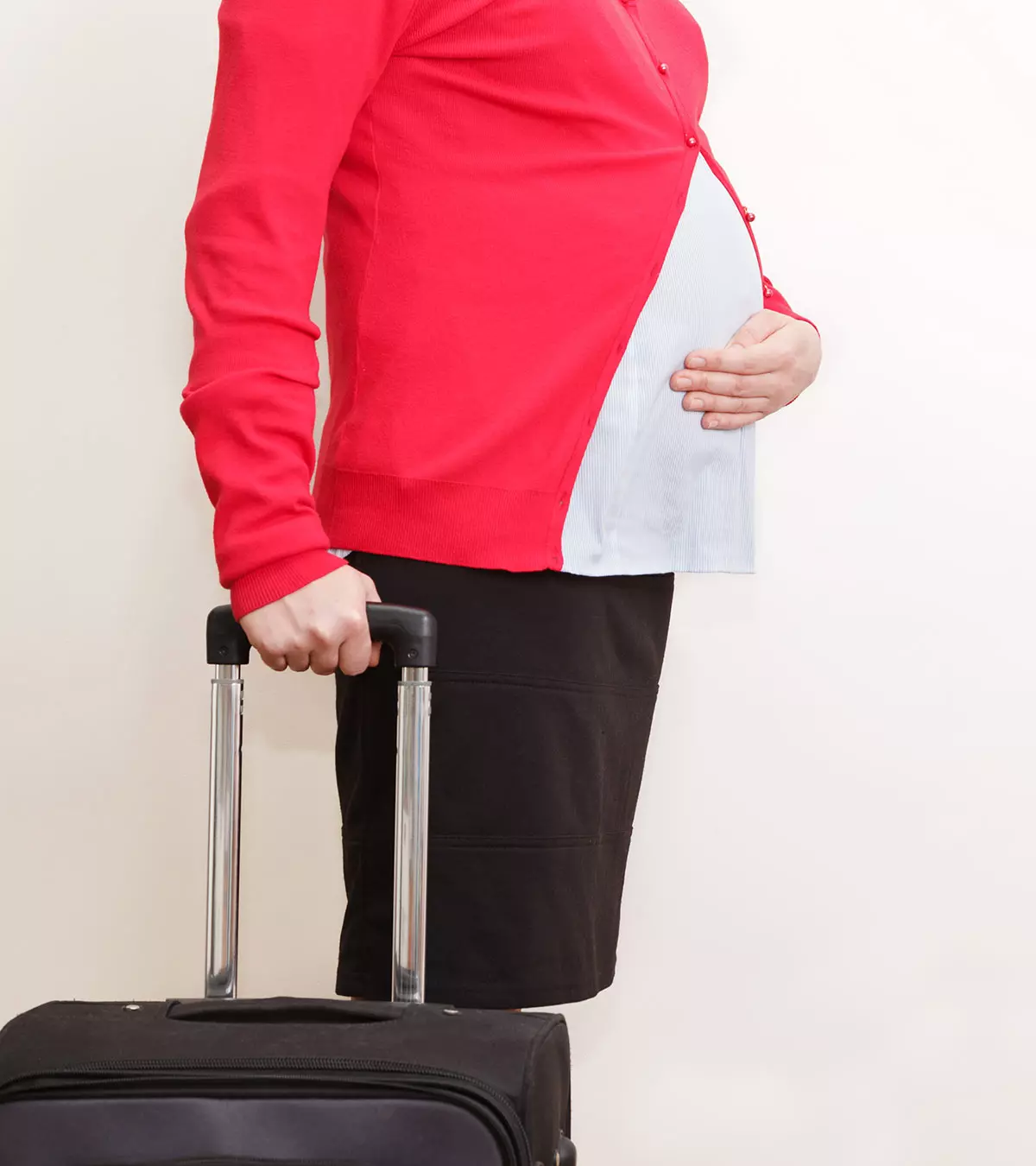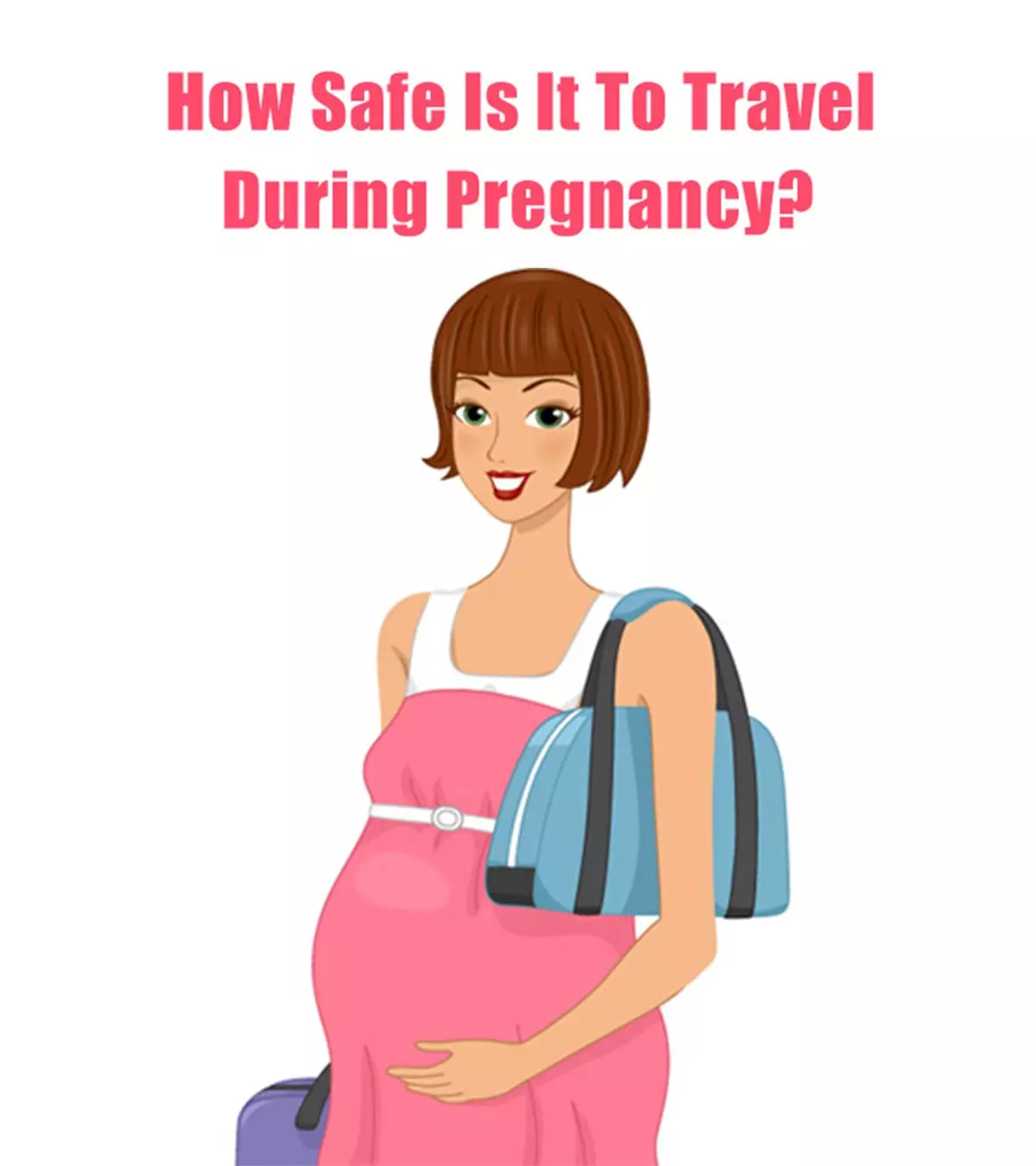
Image: Shutterstock
Shaken baby syndrome is a kind of brain injury that happens due to violently shaking an infant. Babies cry very frequently, and at times, this continuous crying might get on a caretaker’s nerves. They might end up shaking the baby vigorously out of frustration.

Since babies have soft brains and sensitive neck muscles, vigorous shaking might damage their brains. If not treated at the earliest, it might cause shaking injuries like permanent brain damage and increase the chances of mortality.
Read on to know more about shaken baby syndrome and ways to deal with it.
Key Pointers
- Shaken baby syndrome (SBS) occurs when a baby under one is violently shaken, causing injuries to the delicate neck and brain muscles due to the whiplash effect of head bobbing.
- Bleeding within the brain from ruptured blood vessels in the bruised regions and inflammation may cause functional disruption in the baby’s brain due to SBS.
- Rocking, bouncing, gentle air tosses, accidental falls, and vaccination do not cause SBS. However, tossing the baby may lead to other injuries resulting from a fall.
- Symptoms of SBS may include changes in eating patterns, droopy eyes, changes in speech, irritability, lethargy, and crying due to head pain.
- Proper handling of the baby, timely diagnosis, and proper treatment may be effective in preventing permanent disabilities and reducing the risk of mortality from abusive head traumaiA form of child abuse that results in brain damage in infants and young children .
What Is Shaken Baby Syndrome?
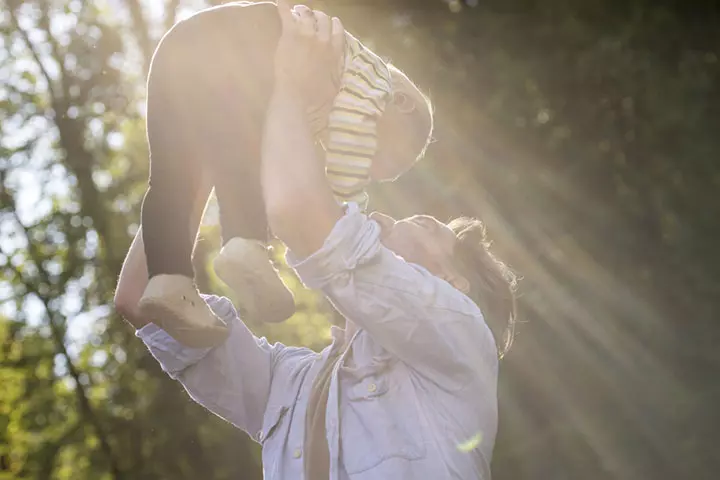
Shaken baby syndrome (SBS) is a condition where the infant suffers an inflicted head trauma due to violent shaking by a caretaker (parent, babysitter, etc.) (1). It is when someone holds the infant by the arms or shoulders and rattles the baby, making the head bob, or move forward and backward rapidly.
The violent jerk of the head resembles the whiplash effectiInjury caused by the sudden, violent, and forceful movement of the head. and causes injury to the brain. The brain trauma is a direct result of the voluntary aggression of the caretaker.
Therefore, shaken baby syndrome is categorized as a form of child abuse and is thus also called abusive head trauma (2).
A study published in the Annals of Emergency Medicine reviewed 20 cases and found that the outcomes for affected infants are often dire—three of the babies died, and ten others suffered long-term health issues, emphasizing the devastating consequences of such abuse (3).
SBS is always preventable. It is abuse and should never happen.
 Did you know?
Did you know?In the US, at least one of every four babies who are violently shaken succumbs to this form of child abuse (14).
Are All Infants At Risk Of Shaken Baby Syndrome?
Yes, infants of any age group can suffer from shaken baby syndrome, but those below the age of one year, and especially those below the age of six months, are most susceptible.
There are some risk factors where these cases occur more often:
Infant factors
- PerinataliPeriod before and after the birth of a child. illness like prematurity or major birth defects
- Incessant crying is a common trigger, so “colicky” babies are higher risk
Family factors
- Familial dysfunction like drug or alcohol abuse or a psychiatric illness in young mothers
- Family disruption and separation
- Prior history of abuse in the family
- Economic factors can also play a role
 Quick fact
Quick factWhat Causes Shaken Baby Syndrome?
Violent shaking of the baby and the underlying biomechanicsiThe study of the movement of a living body. are the primary cause of SBS.
Below, we explain why SBS is caused upon shaking the baby (3):
- Babies have a softer brain tissue and the skull bones are not fused yet. The muscles of the neck are also not strong enough to absorb any sudden jerking movement of the head. It means babies are susceptible to brain injury from even a low-intensity, sudden movement of the head.
- When the baby is shaken, the brain bounces inside the skull, hitting the inner wall of the skull. The part of the brain that bears the impact can get bruised and inflamed and may also lead to intracranial hemorrhageiWhen blood collects inside the skull or in the space between the brain and the skull .
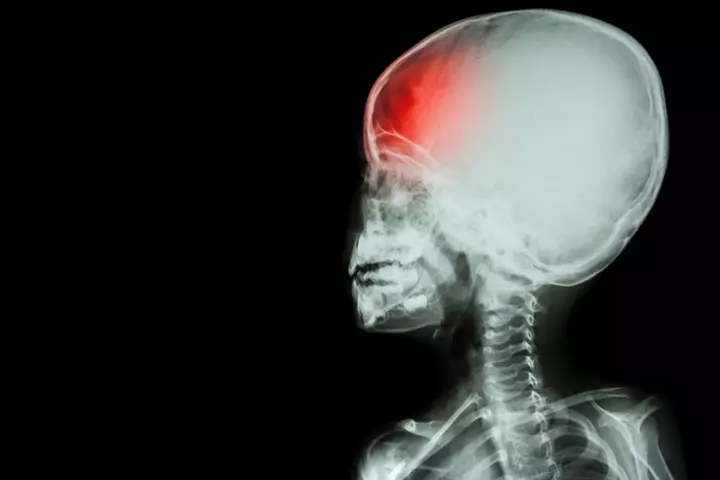
- Blood vessels outside the brain may rupture due to impact and bleed within the skull.
- Bleeding, along with injury, may even cause permanent damage to the brain. Functions controlled by the part of the damaged brain are most likely to be affected.
- Babies can have SBS when they are shaken even while lying in the crib or when the head is resting on a soft material like a mattress. A few seconds of shaking can also cause head trauma in babies.
What Does Not Cause Shaken Baby Syndrome?
The following activities, incidents, or scenarios do not lead to shaken baby syndrome:
- Rocking or swaying the baby in your arms gently.
- Bouncing the baby in your arms or on your legs.
- Tossing the baby in the air.
- Jogging, running, or walking quickly with your baby in your arms.
- Accidental falls when the baby walks or a fall from furniture of low height.
- Driving the baby in a car, on a bumpy road.
- Vaccinating your baby.
Tossing your baby in the air and running around with the baby in the arms is undoubtedly dangerous. Though they may not cause shaken baby syndrome, you must still avoid them.
Head trauma due to vaccination is impossible, and medical experts state that it is only a myth (5).
 Expert says
Expert saysWhat Are The Symptoms Of Shaken Baby Syndrome?
The baby may not display any apparent symptoms that can be related to a head injury. Most symptoms occur spontaneously. Here are the external signs of a shaken baby syndrome (6):
- An abrupt change in eating patterns. The baby will not feed or eat at the usual times. May also display loss of appetite.
- Droopy eyes. It is often the result of injury to the eyeball due to violent movement in the eye socket (intraocular injury). Extreme cases may even cause loss of vision.
- Speech impairment or changes in speech. Sudden onset of stuttering while talking.
- Changes in speech. Sudden onset of stuttering while talking.
- Change in behavior; development of irritability, fussiness, and acute colic.
- Could display lethargy and low energy levels.
- May cry and touch the head several times due to pain. Older toddlers may even point to the head to indicate pain in their area.
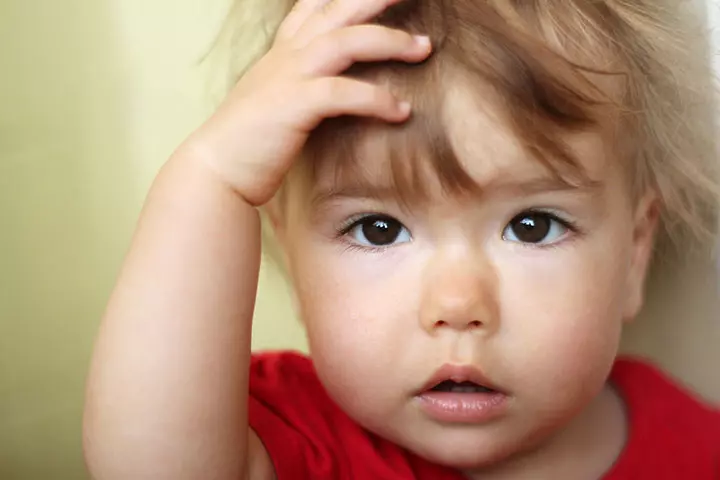
- Diminished hearing abilities and hearing loss in severe cases.
- Unconsciousness, shock, or seizures in babies.
- Also look for signs of trauma to the rest of the body – bruises/bleeds.
Sierra Cooke, a blogger and a mum to a baby who suffered Shaken Baby Syndrome, shares what she encountered, “Our daughter Christa, the symptoms she showed was that she wouldn’t take a bottle at 3 months, she wouldn’t wake up and she had seizures (ⅰ).’’
 Quick fact
Quick factWhen to rush to the doctor?
At any point if abuse is suspected by any caregiver, then the baby should be seen by the medical care provider and they need to be informed of the suspicion. Even in the presence of minimal signs or symptoms – if any abuse is suspected then it must be reported. It can be reported to the doctor, a social worker or the police.
The following symptoms of head trauma occur due to a severely violent shaking of the baby:
- SeizureiA sudden surge of abnormal electrical activity in the brain that briefly affects behavior, muscle control, or awareness and ConvulsionsiAn uncontrollable, sudden violent movement of the body .
- Bleeding from nose or the eye socket, also called retinal hemorrhageiBleeding in the part of the eye that helps detect light, located at the back
- Chronic vomiting
- Semi-consciousness or repeated loss of consciousness
- Stops eating entirely
- Bluish or pale skin especially around the face and the head
- Shows swelling on the fontanelle (soft spot on top of the head)
- Displays developmental delay or regresses, which is losing the existing skills
The long-term effects or prognosis of shaken baby syndrome include physical and cognitive disabilities. Other problems include impaired brain functions, sensory functions, and even neurological disorders like cerebral palsyiDisability due to brain damage affecting movement, posture, and coordination. .
It is difficult to diagnose abusive head injury only through the symptoms accurately.
How Is Shaken Baby Syndrome Diagnosed?

Mild symptoms of change in feeding patterns or behavioral change are not immediately attributable to shaken baby syndrome.
Other symptoms like fussiness and lethargy may go away on their own. More severe indicators such as inflammation, seizures, and bleeding may make the doctor suspect SBS.
The doctor will rely on X-rays, computed tomography scans (CT scans), or magnetic resonance imaging (MRI) to detect an infant’s skull fracture or damage to the brain tissue. The doctor will also examine and X-ray other body parts to rule out other injuries.
Additionally, the doctor may order blood tests to check for internal bleeding or trauma. These tests help rule out other conditions that can mimic the symptoms, such as metabolic or genetic disorders.
Is Shaken Baby Syndrome Treatable?
Treatment entirely depends on the extent of the brain damage. In several cases, the damage is reversed due to the brain’s ability to regenerate damaged nerve cells. Even in such cases, the baby’s abilities and skills could be impacted.
The following course of treatment can help improve the baby’s condition (7):
- Treating the damage: If the baby has external bleeding or inflammation, then the doctor would treat using relevant medications. External dressing and antibiotic dosage to prevent infection can help prevent complications of head trauma. In worst cases, surgery could be required to contain the bleeding.
Cyrille Rossant, a neuroscience researcher, reflects the moment when her 5-month-old son was diagnosed with shaken baby syndrome. He writes, Seven years ago, I was in a small room of a children’s hospital, anxiously waiting for the ER pediatrician to come back with my 5-month-old’s brain CT scan results…The ER physician came back, shocked. “Sir, your son has blood around the brain, a so-called subdural hemorrhage. I’m afraid to tell you that your baby has been shaken.”
“That my own son could be a victim of shaken baby syndrome (SBS), also known as abusive head trauma (AHT), was the most devastating thing I ever heard. Babies who are victims of this severe form of child abuse are known to die or suffer from life-long disabilities after violent shaking, and my very first thoughts concerned his health. Fortunately, the MRI scan was reassuring. David successfully underwent two neurosurgical operations, and he fully recovered (ii).”
- Rehabilitation therapy: A growing baby runs the risk of losing skills or suffering developmental delays due to brain injury. Training through a certified baby therapist can restore lost skills and also prevent loss of existing ones. Use of rehabilitation tools and techniques can help the baby recuperate faster.
Therapy is a long-term effort, the duration of which the baby’s doctor will determine depending on the extent of damage caused by SBS.
Nearly 80% of babies who suffer infant abusive head trauma suffer disabilities for the rest of their lives. About 25% of cases result in the death of the infant either immediately or a while after the incident (8).
Therefore, you need to prevent SBS. Find out more about it next.
How To Prevent Shaken Baby Syndrome?
To prevent shaken baby syndrome, you have to avoid shaking the baby. And the only way to do it is to control your emotions and be careful with whom you leave the baby. Here is what you can do (9):
- Take breaks when the baby gets cranky: There is going to be a lot of crying in your baby’s early months, and sometimes nothing, just nothing, will calm the baby down. During such moments, when your patience is tested, leave the baby in the hands of a reliable family member and take a break. If no one is around, place the infant in a crib, and leave the room for 5-10 minutes. Do not return until you are calm enough to handle the baby. Giving yourself some cool-off time significantly reduces the risk of shaken baby syndrome.
- Call a friend, relative or a helpline when frustrated: Request a relative, such as the baby’s grandparents or aunts or a good friend, to drop by. The presence of another person can give you the needed moral support and help you deal with a cranky baby. If you have no one to call, then consider calling a helpline that supports parents in stressful situations.

- Hire a licensed babysitter: Remember, even a frustrated babysitter can act in a way that causes head trauma to the baby. Always leave the baby in the company of a reliable and licensed babysitter. If you cannot get a babysitter, leave the baby with a friend or relative who does not have any temper issues.
- Choose a licensed daycare center: Choose a daycare center with a good track record and with trained staff who can manage a baby’s tantrums.
- Focus on the positive aspects of parenting: You will face several difficult situations due to your baby’s colic or outright stubbornness. But this is when you need to be balanced and show your maturity. Remember about the numerous occasions when your baby gave you immense joy and satisfaction. Spend your energy on nurturing these thoughts and focusing on things that make you happy about having a baby. It all leads to positive parenting.
Shaken baby syndrome is always preventable with some extra patience. It is true that babies are difficult to handle and being a parent is perhaps the toughest role in life. But your shaking and rattling will not help.
If you feel overwhelmed then get help – one desperate moment of lost control can be life altering. All parents get frustrated, tired and emotionally drained with a new baby. Ask for help if you need it.
Signs To Watch For In Caregivers
Stress, fatigue, and frustration can manifest in various ways, and recognizing these signs can help prevent adverse outcomes. Here are some signs that may indicate that a caregiver might be struggling (10):
- Feeling easily upset, frustrated, or angry, often over small things.
- Constantly worrying about the well-being of the person they are caring for or their own health.
- Inability to concentrate or focus on tasks or make decisions.
- Social withdrawal and loss of interest in activities they usually enjoyed.
- Change in lifestyle, such as sleeping habits and eating patterns.
- Feeling helpless and hopeless often when things become challenging.
What To Do If You See Shaken Baby Abuse
If you suspect or witness shaken baby syndrome (SBS) or any form of child abuse, it’s crucial to act promptly to protect the child. Here’s what you should do:
- Ensure child’s safety: If the child is in immediate distress or danger, move them to a safe environment away from further harm. Stay calm and provide effective support to them.
- Seek immediate medical attention: If you notice signs like bruising, difficulty breathing, or extreme tiredness, call emergency services (911) or take the child to the nearest hospital (9).
- Report concerns: If you suspect abuse, contact local authorities or child protection services (9). Many states have a child abuse hotline. For instance, you may use the National Child Abuse Hotline at 1-800-4-A-CHILD (1-800-422-4453) if you live in the US.
- Don’t confront the perpetrator: If you suspect someone of shaking a baby, do not confront them directly. It could escalate the situation or put the child at further risk.
If you need emotional support or further information, contact a helpline. Many organizations offer confidential support, advice, and resources for handling stressful situations (12).
Frequently Asked Questions
1. What conditions may be caused by shaken baby syndrome?
The following conditions may be caused by shaken baby syndrome (13):
- Subdural hematoma (collection of blood between the surface of the brain and the outer membrane surrounding it)
- Subarachnoid hemorrhage (bleeding between the arachnoidiDelicate membrane surrounding the brain and the spinal cord. and the brain)
- Retinal hemorrhage
- Breakage of the nerve cells in the brain
- Fractures to other body parts
2. How long does it take for the symptoms of shaken baby syndrome to manifest?
The symptoms of shaken baby syndrome may be seen immediately after shaking the baby. They usually peak within four to six hours (13).
3. Can shaken baby syndrome be diagnosed later in life?
Yes, while some symptoms of shaken baby syndrome appear immediately, others, such as attention and behavioral disorders, may be diagnosed later in life (1).
4. What is the triad for shaken baby syndrome?
Retinal bleeding, subdural hemorrhage, and Hypoxic-ischemic encephalopathy are the diagnostic clinical triad for shaken baby syndrome (14).
5. How common is shaken baby syndrome?
The incidence of shaken baby syndrome (SBS) is uncertain because there are no dependable ways to gather data on this problem. The National Center on Shaken Baby Syndrome estimates that there are 600 to 1,400 cases annually in the United States. Although the precise figure is unclear, this abusive head trauma sadly stands as the primary cause of death and lasting disability for infants and young children experiencing child abuse (13).
Shaken baby syndrome (SBS) may occur due to sudden rattling of the baby when held by the arms or shoulders. As babies have an immature skull and brain, it may cause brain injury resulting in impaired brain functions and physical and cognitive impairments. Babies below six months, “colicky” babies, or those with major congenital disabilities are susceptible to SBS, which is considered a form of child abuse. Lethargy, irritability, and sudden appetite changes may indicate mild damage, while seizures, bleeding, or chronic vomiting may occur in severe cases. Seek immediate medical help if you observe any such changes in your baby.
Infographic: What Are The Long-Term Effects Of Shaken Baby Syndrome?
Brain injuries due to shaken baby syndrome can significantly impact a baby’s normal brain development. Some children with severe injuries may require special education and care for the rest of their lives. Check out the infographic to know the long-term effects of shaken baby syndrome. Illustration: Momjunction Design Team
Illustration: Signs Of Shaken Baby Syndrome Causes & Treatment
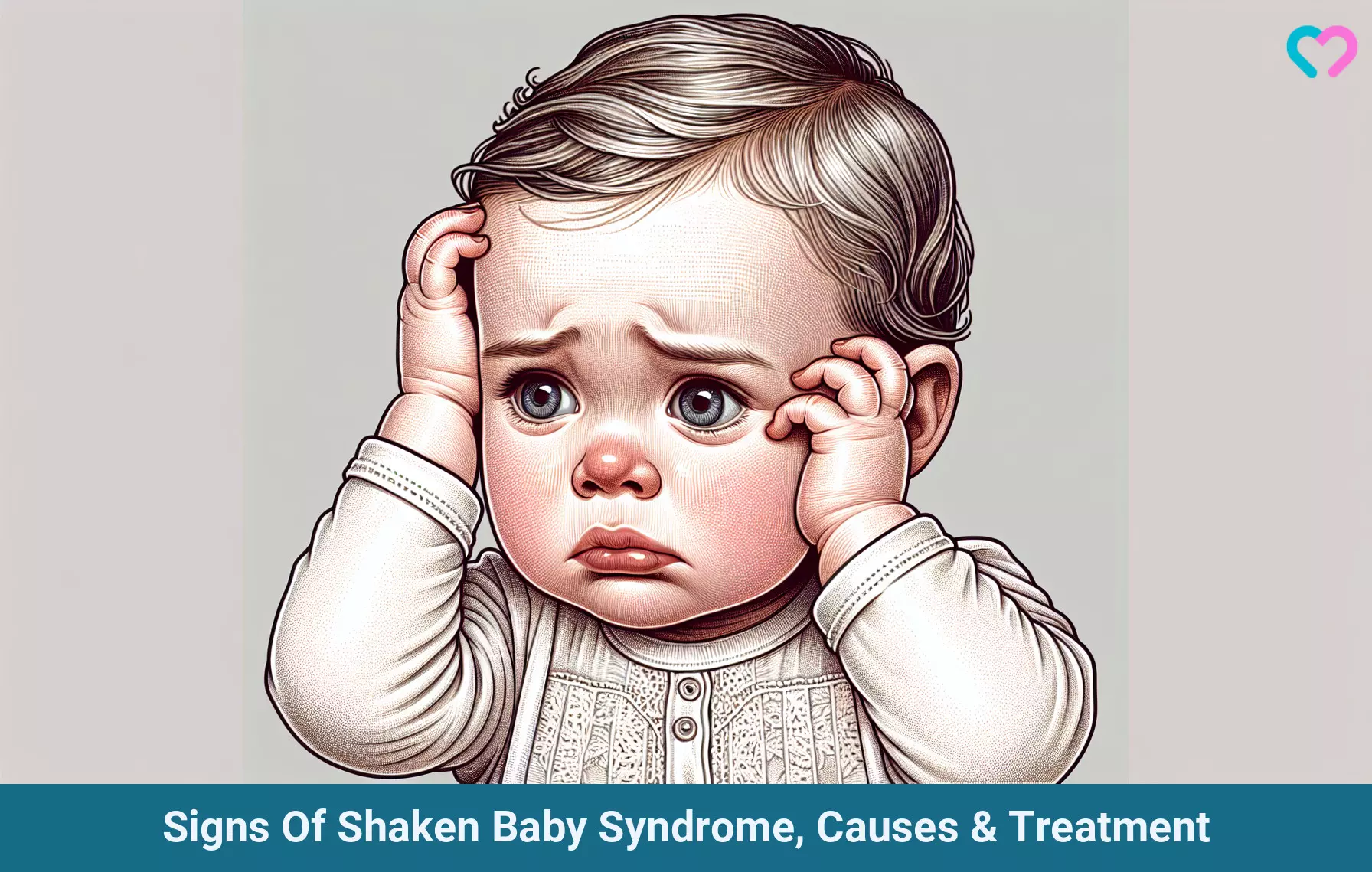
Image: Dall·E/MomJunction Design Team
Shaken Baby Syndrome is a serious and preventable form of child abuse. Learn how to recognize and prevent it through this informative video.
Personal Experience: Source
MomJunction articles include first-hand experiences to provide you with better insights through real-life narratives. Here are the sources of personal accounts referenced in this article.
ⅰ. Shaken Baby Syndrome Signs and Symptoms.https://www.youtube.com/shorts/y4Z4mS8wbi0
ⅰⅰ. A journey into the shaken baby syndrome/abusive head trauma controversy.
https://cambridgeblog.org/2025/05/a-journey-into-the-shaken-baby-syndrome-abusive-head-trauma-controversy/
References
- Shaken baby syndrome.
https://my.clevelandclinic.org/health/diseases/13779-shaken-baby-syndrome - Abusive Head Trauma (Shaken baby syndrome).
https://kidshealth.org/en/parents/shaken.html - Ludwig, S, and M Warman.; (1984); Shaken baby syndrome: a review of 20 cases.
https://pubmed.ncbi.nlm.nih.gov/6691610/ - Shaken baby syndrome.
https://medlineplus.gov/ency/article/007578.htm - Vaccines and shaken baby syndrome.
https://www.chop.edu/vaccine-education-center/vaccine-safety/vaccines-and-other-conditions/shaken-baby-syndrome - Shaken baby syndrome.
https://www.urmc.rochester.edu/childrens-hospital/developmental-disabilities/conditions/shaken-baby-syndrome - Learn More.
https://www.dontshake.org/learn-more - About Abusive Head Trauma.
https://www.cdc.gov/child-abuse-neglect/about/about-abusive-head-trauma.html?CDC_AAref_Val=https://www.cdc.gov/violenceprevention/childabuseandneglect/Abusive-Head-Trauma.html - Caregiver Burnout.
https://my.clevelandclinic.org/health/diseases/9225-caregiver-burnout - Shaken Baby Syndrome: Report on Four Pairs of Twins.
https://www.ojp.gov/ncjrs/virtual-library/abstracts/shaken-baby-syndrome-report-four-pairs-twins - National Resources.
https://dontshake.org/family-resources - Shaken Baby Syndrome
https://www.aans.org/conditions-and-treat/shaken-baby-syndrome/ - M De Leeuw and W Jacobs; (2007); Shaken baby syndrome: the classical clinical triad is still valid in recent court rulings.
https://www.ncbi.nlm.nih.gov/pmc/articles/PMC4095469 - A Journalist’s Guide to Shaken Baby Syndrome: A Preventable Tragedy.
https://stacks.cdc.gov/view/cdc/5865
Community Experiences
Join the conversation and become a part of our nurturing community! Share your stories, experiences, and insights to connect with fellow parents.
Read full bio of Dr. Wayne Hough

Dr. Po-Chang Hsu is a medical doctor and medical content expert. He received his medical degree from Tufts University School of Medicine in Boston in 2016. Previously, he did a master’s degree at Harvard University and wrote a thesis on neuroimaging in schizophrenia patients at Brigham and Women’s Hospital. He currently works at Alpas Wellness.
Dr. Po-Chang Hsu is a medical doctor and medical content expert. He received his medical degree from Tufts University School of Medicine in Boston in 2016. Previously, he did a master’s degree at Harvard University and wrote a thesis on neuroimaging in schizophrenia patients at Brigham and Women’s Hospital. He currently works at Alpas Wellness.
Read full bio of Rohit Garoo
Read full bio of Dr. Ritika Shah
Read full bio of Shinta Liz Sunny







